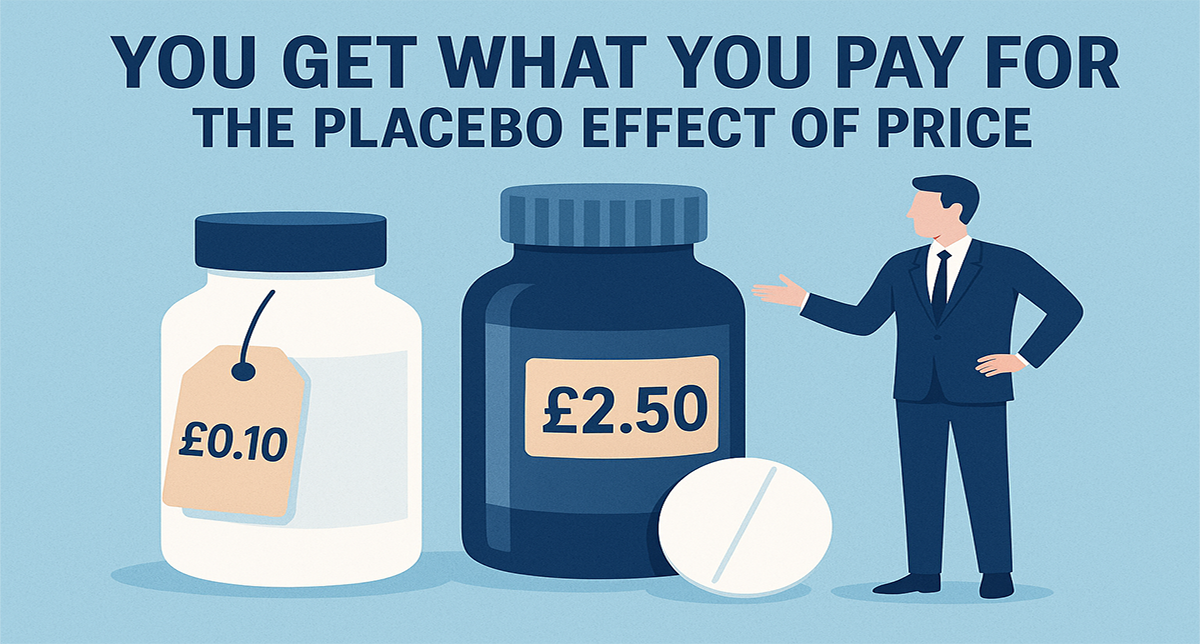What is the Availability Heuristic?
The availability heuristic describes the human tendency to use information that comes to mind quickly and easily when making decisions.
Why does the Availability Heuristic happen?
A heuristic is a mental shortcut that helps guide our decisions. When we make a choice, the Availability Heuristic makes our decision easier by helping us recall prominent and memorable information. However, it challenges our ability to make accurate judgements as our memories may not be realistic models for forecasting future outcomes.
Where can we see the Availability Heuristic?
The Availability Heuristic can be applied to most decision we make on a daily basis. Whether trivial or life-changing, it is a cognitive bias that can affect our choices.
A retail example of the Availability Heuristic
Imagine you are considering 2 different brands of biscuits to purchase. Both are the same price, and both have the same nutritional information. You've bought both brands before but whilst eating Brand A biscuit, you had a choking episode. This vivid memory likely weighs more heavily on your decision than it should. This is due to the Availability Heuristic, which suggests that singular memorable moments have an outsized influence on decisions.
A general example of the Availability Heuristic
Many people think that the likelihood of dying from shark attacks is greater than that of dying from being hit by falling aeroplane parts, when more people actually die from falling aeroplane parts. When a shark attack occurs, the deaths are widely reported in the media, whereas deaths as a result of being hit by falling aeroplane parts are rarely commented on. This biased portrayal leads to an availability heuristic which leads us to dying fear shark attacks more than being killed by falling aeroplane parts.

Why should be aware of the Availability Heuristic?
The Availability Heuristic can lead to bad decision-making because memories that are easily recalled are often not sufficient in figuring out how likely things are to happen again in the future. This can have serious consequences in professional fields and life in general.
People make thousands of decisions per day and factors such as media coverage, emotional reactions and vivid images have greater influence than they would in a rational calculation. Being aware of our subconscious biases can prevent us from irrational reasoning, unintentional discrimination or costly mistakes in investments and business decisions.
Can we avoid the Availability Heuristic?
Since this phenomenon is the core cognitive function of saving mental effort, simply knowing how it works is not sufficient to overcome it. It describes behaviour that results from multiple shortcuts that our brain makes in order to process all of the world’s information.
Although awareness alone cannot change one’s thought process, it is essential in order to support and implement policies that take the heuristic into account. Taking steps to recognise and check the availability heuristic is crucial for ensuring fair treatment for consumers and citizens in areas ranging from regulating gambling law, to preventing discrimination, to holding the media accountable. (ref)
The Availability Heuristic in System 1 and System 2 thinking
Avoiding this cognitive bias' effects requires ‘System 2 thinking’. This refers to the mental network that is engaged in deliberative and careful decision-making, as opposed to System 1, which is fast and automatic. The availability heuristic works on System 1 because people are quick to make judgements and act impulsively.
Overcoming the availability heuristic involves activating System 2 thinking, which is more difficult independently. This is often easier to do in group decision making because others can challenge an individual's thought process, however, this opens a new can of worms we refer to as groupthink.
A more effective strategy to counteract the availability heuristic is ‘red-teaming.’ This involves one group member challenging the prevailing opinion, no matter their personal beliefs, in order to intentionally point out the mistakes that occur in individual decision-making. Ultimately, this can reduce the chance that heuristics are treated as facts.

How can you use the Availability Heuristic in marketing?
When it comes to aligning your brand with the availability heuristic, there are steps you can and should consider:
- Be famous for 1 thing – don’t try to embed a host of brand attributes into the minds of shoppers. Be famous for just one, but be really famous for it. That way you'll own one availability heuristic.
- Align with the mood of the day – as words, phrases and topics reach tipping points and appear to take over news feeds, try to tap into them in a positive way. We all know about climate change, right? So, if your brand can be linked to slowing climate change, then bingo, you’ve tapped into an availability heuristic.
- Stay on message – some brands and retailers have had the same strap line for years. Other flit and change almost on a monthly basis. New ad agency, equals new strap line. But it takes a long time to properly embed a brand into the mind of a shopper. You need your brand to come to mind whenever a shopper thinks of your category, and for the right reasons too.
Summary
In summary, endeavour to make your brand the most front of mind in category. Link it to consumption and link it emotionally too. When shoppers think of your category, they need to immediately think of your brand and draw upon Availability Heuristics.






